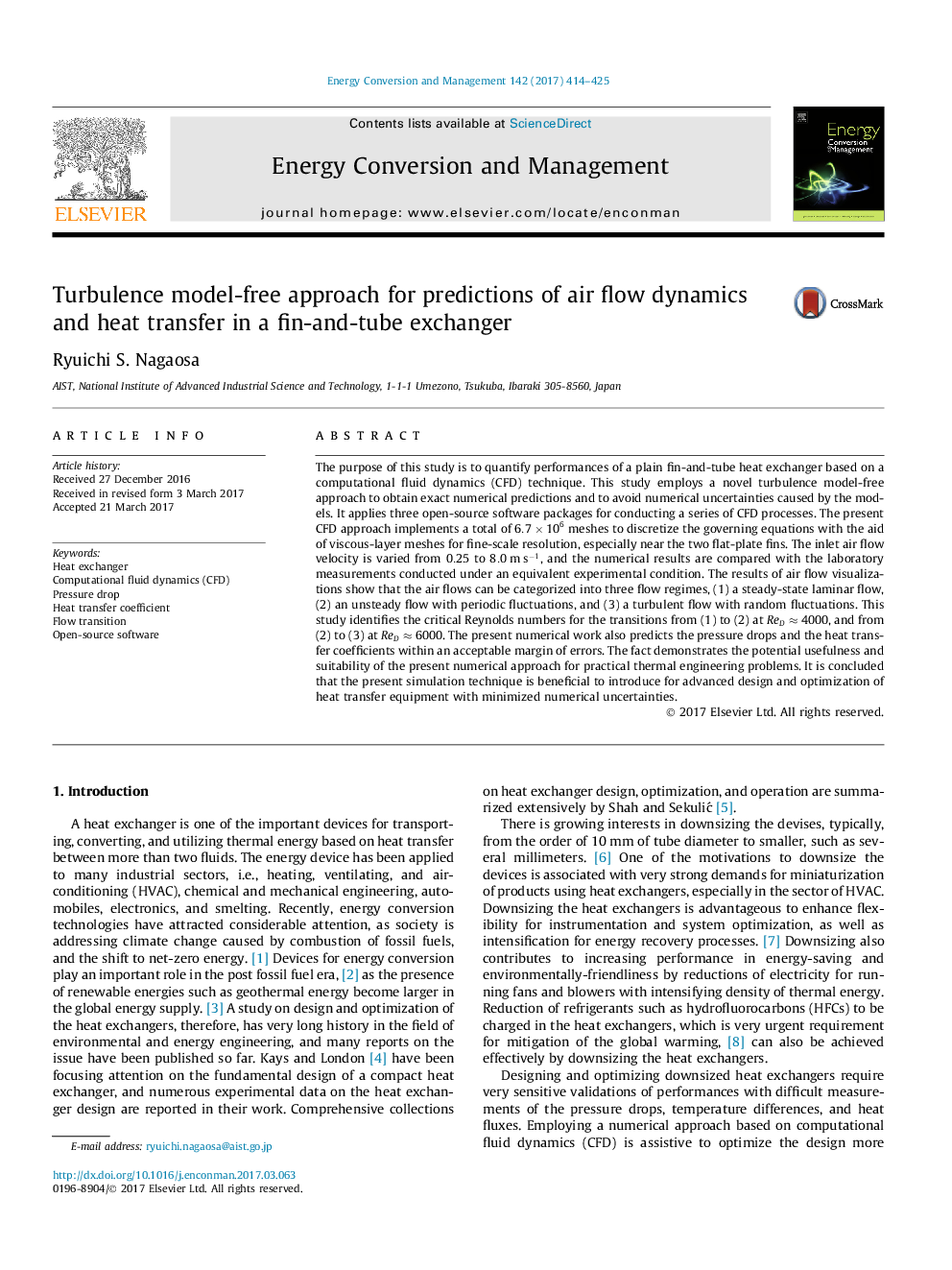| Article ID | Journal | Published Year | Pages | File Type |
|---|---|---|---|---|
| 5012835 | Energy Conversion and Management | 2017 | 12 Pages |
Abstract
The purpose of this study is to quantify performances of a plain fin-and-tube heat exchanger based on a computational fluid dynamics (CFD) technique. This study employs a novel turbulence model-free approach to obtain exact numerical predictions and to avoid numerical uncertainties caused by the models. It applies three open-source software packages for conducting a series of CFD processes. The present CFD approach implements a total of 6.7Ã106 meshes to discretize the governing equations with the aid of viscous-layer meshes for fine-scale resolution, especially near the two flat-plate fins. The inlet air flow velocity is varied from 0.25 to 8.0ms-1, and the numerical results are compared with the laboratory measurements conducted under an equivalent experimental condition. The results of air flow visualizations show that the air flows can be categorized into three flow regimes, (1) a steady-state laminar flow, (2) an unsteady flow with periodic fluctuations, and (3) a turbulent flow with random fluctuations. This study identifies the critical Reynolds numbers for the transitions from (1) to (2) at ReDâ4000, and from (2) to (3) at ReDâ6000. The present numerical work also predicts the pressure drops and the heat transfer coefficients within an acceptable margin of errors. The fact demonstrates the potential usefulness and suitability of the present numerical approach for practical thermal engineering problems. It is concluded that the present simulation technique is beneficial to introduce for advanced design and optimization of heat transfer equipment with minimized numerical uncertainties.
Keywords
Related Topics
Physical Sciences and Engineering
Energy
Energy (General)
Authors
Ryuichi S. Nagaosa,
